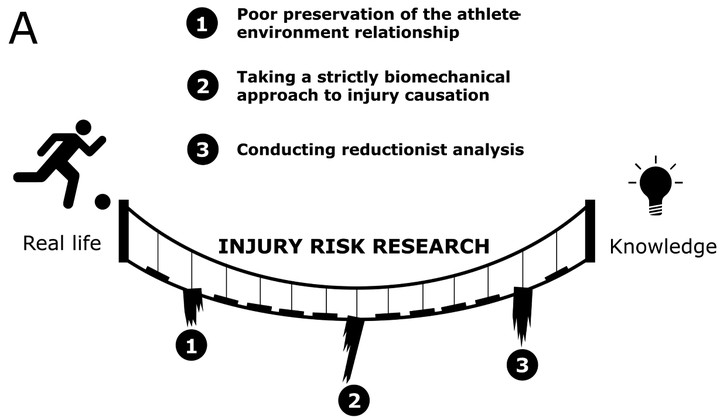
Abstract
Research of non-contact anterior cruciate ligament (ACL) injury risk aims to identify modifiable risk factors that are linked to the mechanisms of injury. Information from these studies is then used in the development of injury prevention programmes. However, ACL injury risk research often leans towards methods with three limitations: 1) a poor preservation of the athlete-environment relationship that limits the generalisability of results, 2) the use of a strictly biomechanical approach to injury causation that is incomplete for the description of injury mechanisms, 3) and a reductionist analysis that neglects profound information regarding human movement. This current opinion proposes three principles from an ecological dynamics perspective that address these limitations. First, it is argued that, to improve the generalisability of findings, research requires a well-preserved athlete-environment relationship. Second, the merit of including behaviour and the playing situation in the model of injury causation is presented. Third, this paper advocates that research benefits from conducting non-reductionist analysis (i.e., more holistic) that provides profound information regarding human movement. Together, these principles facilitate an ecological dynamics approach to injury risk research that helps to expand our understanding of injury mechanisms and thus contributes to the development of preventative measures.